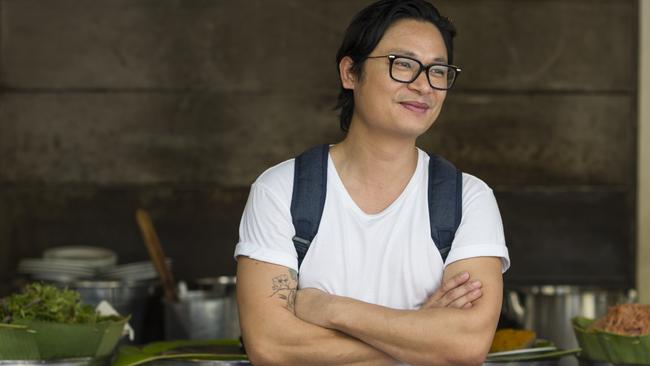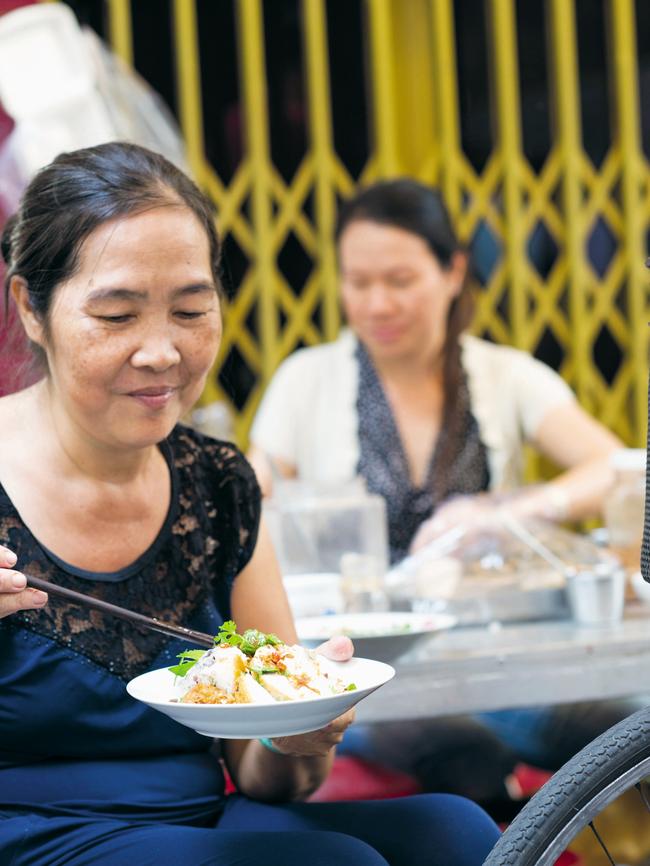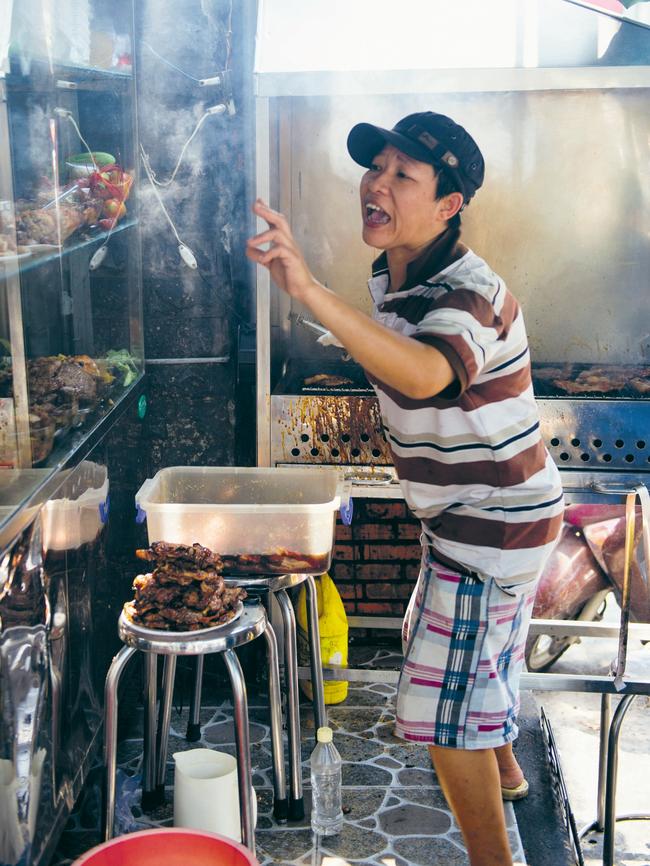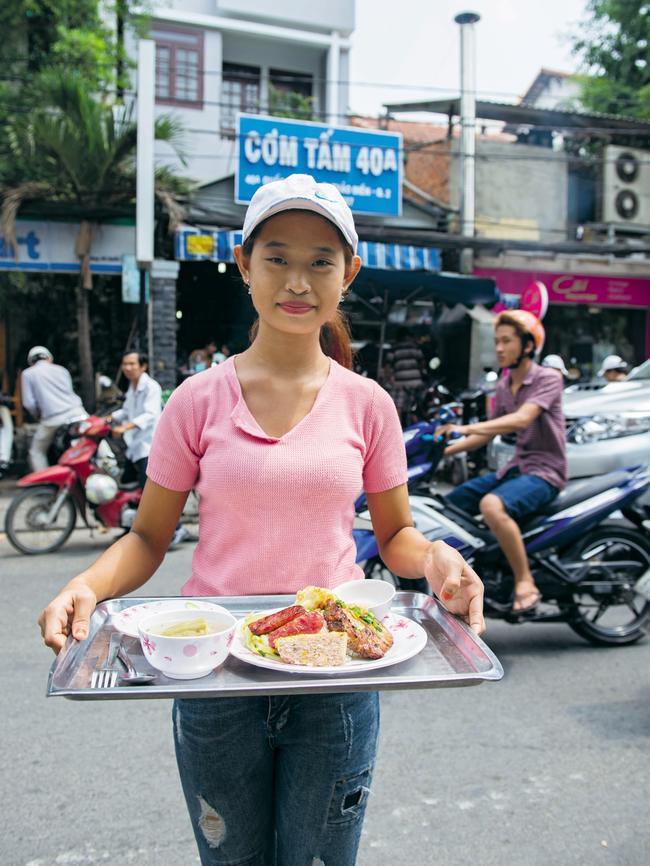Luke Nguyen’s Saigon food guide
Luke Nguyen helps track down the best Vietnamese fare in Saigon.

Crazy-hectic and developing at an astounding pace, Saigon’s got an energy and dynamism you can almost smell. I totally love it. Maybe I’m biased though, as the city is now my second home. It’s also where my family came from before they moved to Australia all those years ago, so the place is virtually in my DNA.
Naturally I’m addicted to the street food, and I practically trip over it every day because this city is one heaving smorgasbord of outdoor dining options, wherever you venture or look. Seafood, fresh herbs, prodigious varieties of vegetables, sweetish, light flavours and simple cooking styles are the hallmarks of Saigon’s food, though being Vietnam’s biggest city, there’s plenty of regional fare from other corners of the country on offer too. Throw in some French influence (you haven’t lived until you’ve had Vietnamese drip coffee with condensed milk or a crunchy-fluffy baguette filled with local charcuterie) and an uber-vibrant Chinatown and you’ve got an incredibly rich street food repertoire.
The locals have their favourite food haunts and one of mine is Co Giang Street in District 1. I like to come here early, when it’s still a little calm, and breakfast on bun thit nuong, which consists of honey-marinated grilled pork, springy rice noodles, herbs, pickled vegetables, spring rolls and peanuts. This dish, typical of Saigon cuisine, contains every texture imaginable — crunchy, slippery, chewy, snappy, slurpy.
During the day, as I poke around streets and back alleys across Saigon’s 24 districts, I can’t stop grazing on tasty little snacks, such as banh khot, which are crisp, soft-centred “pancakes’’ made in special pans using a turmeric-scented batter. You eat them with fresh herbs, wrapped in lettuce leaves and dipped in nuoc cham, or sweetened fish sauce. Then there are Saigon’s myriad soups, which are perfect for this hot climate. Sup cua oc heo, or crab soup with pork brain, is light and fragrant and way more delicious than it might sound. Bun mam is a porky-seafoody noodle soup dish based on pungent, fermented anchovy stock that’s really typical of this part of Vietnam, and another favourite dish of mine.
As night settles, the pace on the street intensifies, with scooters, cyclists and taxis zeroing in on favourite evening eats. I like to hang out in the non-touristy District 4, where my uncle lives. The fragrance of lemongrass, lime, black pepper and garlic oil hangs in the air and there’s cooking, and eating, activity right on the pavements.

BEEF NOODLE SOUP
LOCAL NAME: PHO BO
Two questions I am often asked are, “What is pho?’’ and, “Where does it come from?” To answer the second, though the exact origins are unclear, rumour has it that pho was created in northern Vietnam in the early 20th century. Both Chinese and French cooking heavily influenced the dish, which may have been derived from the French beef stew, pot-au-feu. A hearty, broth-based noodle soup often made with beef or chicken, it varies from region to region. In northern Vietnam the broth is likely to be lighter and made with fewer ingredients, the noodles served with thin beef slices and ginger, or chicken and lime leaves, and accompanied by bean sprouts, herbs, lime and fresh chilli on the side. In southern Vietnam, the broth is a lot sweeter and made from more ingredients, and the accompaniments include hoisin sauce, fish sauce and chilli paste.
When people ask where I get the best pho (and they always do), I take them down an alleyway in District 1, through clouds of spice-infused steam, where the family at Pho Ngoc have been making this iconic dish for more than 30 years. Coming here is like being fed by your grandmother; the atmosphere is warm and the pho is indescribably good. (Add a poached egg to the broth when ordering for extra silkiness.) The diners are regular customers — I meet a man who tells me his grandma has been eating here since she could remember and she brings him here every Saturday as a family ritual.
VIETNAMESE STEAMED RICE ROLLS WITH PORK AND MUSHROOM STUFFING
LOCAL NAME: BANH CUON
Beautiful, elegant to eat and amazing to watch being prepared, banh cuon is one of my all-time favourite Vietnamese breakfast dishes. The delicate rice flour sheets can be made extremely thin and I love to watch the aunties making these. To start, they slowly pour a very thin layer of the rice batter on to a fabric-covered pot and evenly spread it paper thin, then cover it briefly with a lid to cook. Less than a minute later, the delicate rice flour wrappers are picked up using a flat bamboo stick and transferred to their boards. They are then filled with stir-fried pork and mushrooms and carefully rolled. Topped with fresh herbs and served with warm nuoc cham, breakfast doesn’t come much tastier.

CHARGRILLED PORK CHOPS WITH BROKEN RICE AND EGG
LOCAL NAME: COM BI SUON
Here’s another of my favourite dishes and it’s one that I have for lunch two, or even three times a week when I’m in Saigon. It not only packs a ton of flavour but has a cool backstory. When rice is milled to separate the husks from the grains, some grains end up breaking in the process and need to be separated out from the first grade, undamaged rice. Back in the day, poor rice

farmers would save this broken rice and eat it as a cheap source of food. Today, it’s become something of a delicacy for the Vietnamese and is so sought after that it’s actually rather expensive to buy. I love the irony of this. Why do Vietnamese people love broken rice so much? I think it’s because of the texture, which is something quite special. The marinated pork in this dish requires the smokiness that comes from chargrilling to taste right, even though some vendors pan fry it instead. So when you go to Saigon, look for ones that grill over coals. To serve, the pork goes on the rice with coriander, cucumber, tomatoes and a bit of spring onion oil. On goes a fried egg, some lap cheong and with tasty nuoc cham on the side, it’s a perfect light meal for any time of the day.
This is an edited extract from Street Food Asia by Luke Nguyen (Hardie Grant Books, $60).


